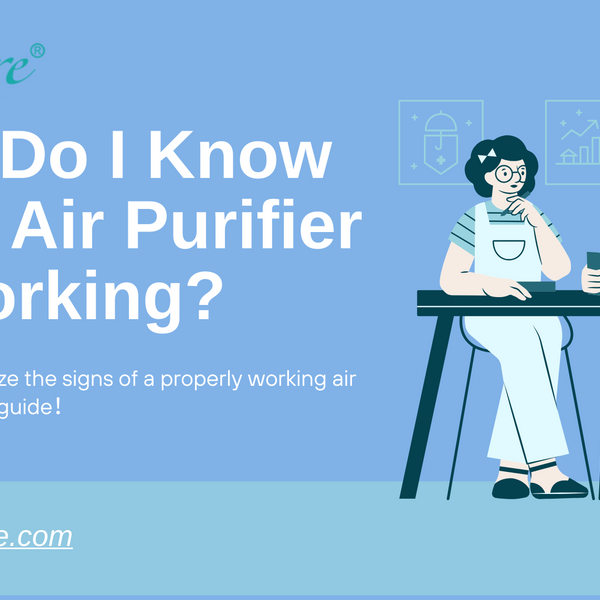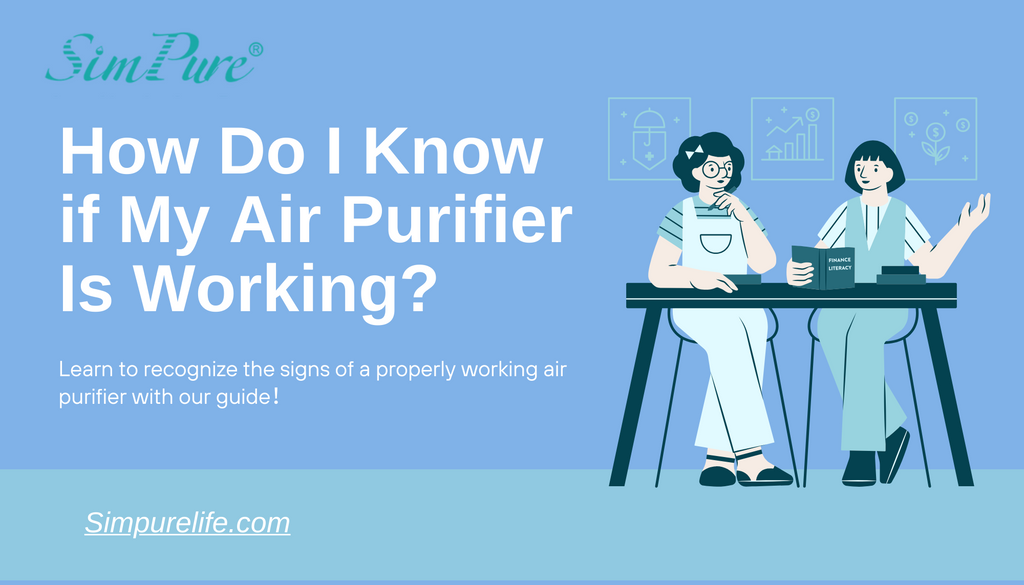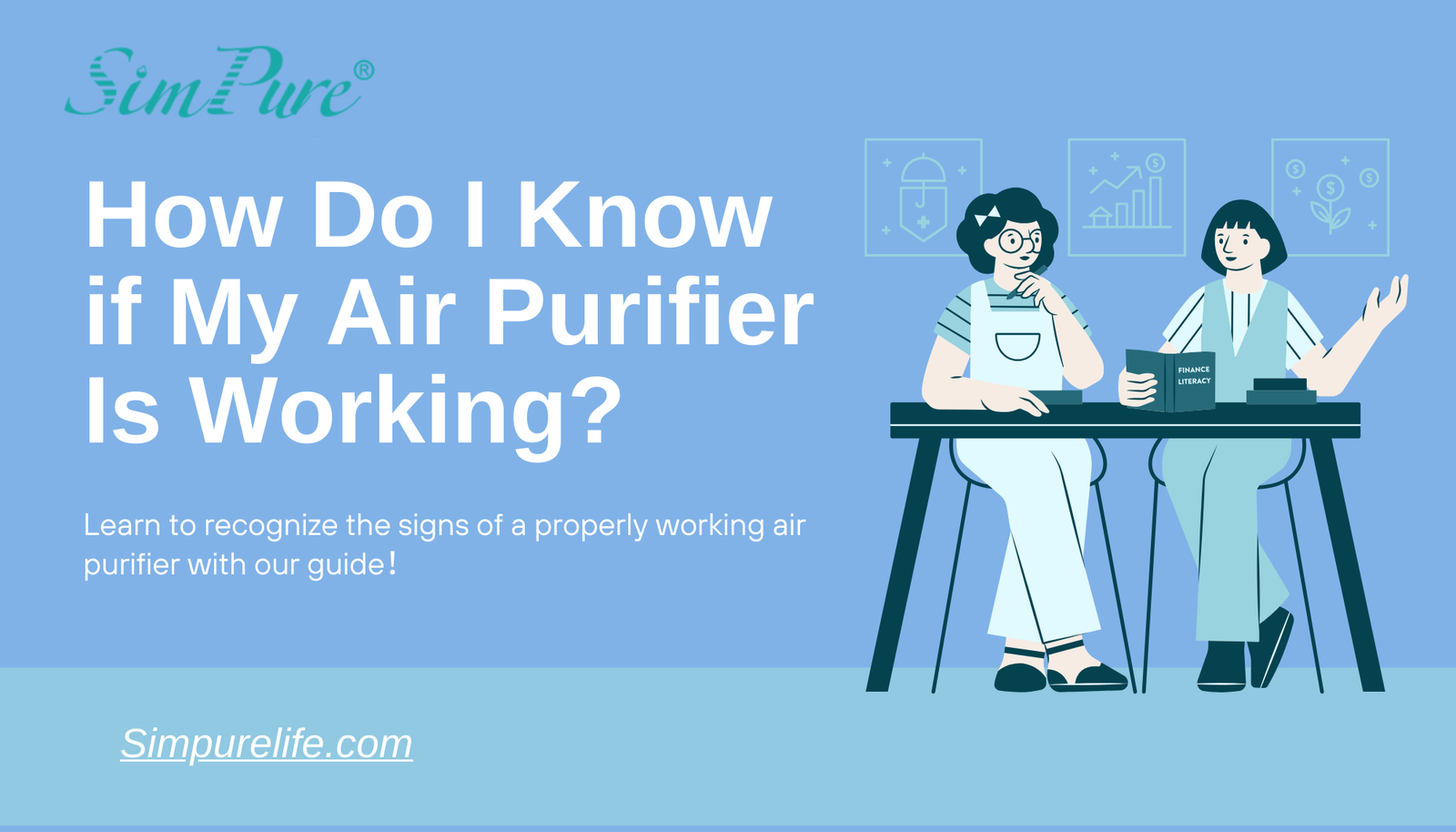An air purifier helps keep your indoor air clean. But how do you know if it’s working properly?
Knowing the signs of a functioning air purifier is crucial for your health and comfort. Air purifiers filter out dust, allergens, and pollutants. They ensure the air you breathe is fresh and clean. But sometimes, it’s hard to tell if they’re doing their job.
In this blog post, we’ll explore key indicators that your air purifier is operating effectively. We will discuss the importance of clean filters, the presence of odors, and other signs that show your device is working as it should. This knowledge will help you maintain a healthy home environment and get the most out of your air purifier.
Signs Of Proper Air Purifier Function
Wondering if your air purifier is doing its job? It’s important to know the signs of proper air purifier function. A well-working air purifier can make a significant difference in your indoor air quality. Let’s explore some tell-tale signs that your air purifier is operating as it should.
Cleaner Air Quality
One clear sign of a functioning air purifier is cleaner air quality. You’ll notice fewer dust particles in the air. Surfaces in your home will stay cleaner longer. You may also find that your home smells fresher. Odors from cooking, pets, or smoke should be less noticeable. Cleaner air is a strong indication that your purifier is working well.
Reduction In Allergens
If you suffer from allergies, a working air purifier can be a relief. You may experience fewer allergy symptoms. Sneezing, coughing, and itchy eyes can decrease. An effective air purifier will trap pollen, pet dander, and other allergens. This leads to a noticeable reduction in allergic reactions.

Credit: iaq.works
Check The Filter Indicator
Knowing if your air purifier is working properly is crucial. One of the easiest ways to check is by looking at the filter indicator. This indicator provides clear information about the condition of your air purifier’s filter. Let’s break it down into two main points.
Filter Replacement Light
Many air purifiers come with a filter replacement light. This light tells you when it is time to change the filter. Typically, the light turns on or changes color. For instance, it might go from green to red. This change means the filter is dirty and needs replacing.
Here is how you can understand the filter replacement light:
| Light Color | Meaning |
|---|---|
| Green | Filter is clean |
| Yellow | Filter is partly dirty |
| Red | Filter needs replacement |
Keep an eye on this light. It helps in maintaining the efficiency of your air purifier.
Manual Inspection
Even with a filter replacement light, a manual inspection is helpful. Here are steps for a manual check:
- Turn off and unplug the air purifier.
- Open the filter compartment.
- Remove the filter.
- Inspect the filter for dust and dirt.
- If the filter looks dark or clogged, replace it.
Regular inspection ensures the air purifier is always in top condition. This simple check can make a big difference in air quality.
Monitor Air Quality Levels
Ensuring that your air purifier works properly involves more than just turning it on. Monitoring the air quality levels in your home is a reliable way to see if the purifier is effective. With the help of air quality monitors, you can easily track the performance of your device.
Using Air Quality Monitors
Air quality monitors are devices that measure the levels of pollutants in the air. These monitors can detect a range of particles, including dust, smoke, and pollen. Some advanced models also measure volatile organic compounds (VOCs) and other harmful gases.
To use an air quality monitor, place it in the same room as your air purifier. Ensure the monitor is positioned at least a few feet away from the purifier for accurate readings. Turn on the monitor and let it run for a few hours to get a baseline measurement of the air quality.
Interpreting Monitor Readings
After running the air quality monitor, you will see various readings displayed. These readings often include levels of particulate matter (PM2.5), VOCs, and other pollutants. Understanding these readings can help you assess the effectiveness of your air purifier.
| Pollutant | Ideal Level |
|---|---|
| PM2.5 | 0-12 µg/m³ |
| VOCs | 0-500 ppb |
| CO2 | 400-1000 ppm |
If the readings on your monitor fall within the ideal levels, your air purifier is working well. If the readings are high, you may need to clean or replace the purifier’s filter. Regular monitoring can help you maintain a healthy indoor environment.

Credit: www.simpurelife.com
Noise Levels
One way to check if your air purifier is working properly is by listening to its noise levels. The sounds it makes can tell you a lot about its condition. Below, we explore the different types of sounds you might hear and what they mean for your air purifier.
Consistent Sound
A well-functioning air purifier should have a consistent sound. This means a steady hum or soft whirring noise. If you notice your air purifier making a regular, even sound, it’s likely operating correctly.
- Low-speed settings: Should produce a gentle hum.
- High-speed settings: Slightly louder but still smooth.
Consistency in sound indicates that all parts are functioning well. No unusual strain or disruptions.
Unusual Noises
Hearing unusual noises is a sign that something might be wrong. These noises can include rattling, clicking, or grinding sounds.
- Rattling: Could mean a loose part inside the purifier.
- Clicking: Might indicate something stuck in the fan.
- Grinding: Could signal a motor issue.
If you hear any of these noises, it’s best to check the unit. You might need to clean or service it.
In summary, paying attention to noise levels can help you determine if your air purifier is working properly. Consistent sound is a good sign. Unusual noises suggest a problem that needs addressing.
Airflow Consistency
Ensuring airflow consistency is vital for the efficiency of your air purifier. Consistent airflow means the device is effectively cleaning the air. Inconsistent airflow can indicate issues that require attention.
Check Ventilation
Proper ventilation is essential for your air purifier to work well. Make sure the air intake and output vents are clear. Blocked vents can reduce the purifier’s effectiveness.
Regularly inspect the vents for dust and debris. Clean them with a soft brush or cloth. This simple task can make a big difference.
Ensure Unobstructed Airflow
Place your air purifier in a spot where air can flow freely. Avoid placing it behind furniture or close to walls. This placement can block the airflow and reduce its efficiency.
Follow the manufacturer’s guidelines for optimal placement. Typically, a central location is best. This ensures that the air purifier can cover the entire room.
Tips for unobstructed airflow:
- Keep at least 1-2 feet of space around the purifier.
- Avoid placing it near curtains or drapes.
- Ensure no objects are placed on top of the purifier.
By ensuring proper airflow consistency, your air purifier will work more effectively. Check the ventilation and ensure unobstructed airflow regularly. This will help maintain a healthy living environment.
Energy Consumption
Energy consumption is a key indicator of your air purifier’s performance. It helps you understand if it’s working properly and efficiently. Monitoring energy use can save money on your electricity bill.
Power Usage Patterns
Observe your air purifier’s daily power usage. Does it consume more power during certain times? Consistent power usage suggests it is functioning correctly. Fluctuations in power consumption might indicate problems.
Comparison To Manufacturer Specs
Compare your air purifier’s energy consumption to the manufacturer’s specifications. Check the user manual or product label for these details. Significant differences in power use can signal an issue with the device.
Maintenance Routine
Keeping your air purifier in top shape ensures it works effectively. A proper maintenance routine can extend its life and improve air quality. Let’s dive into some essential steps for maintaining your air purifier.
Regular Cleaning Schedule
Dust and dirt can clog your air purifier. Clean the exterior weekly with a damp cloth. Check the pre-filter every month. Wash it if it’s washable, or replace it if it’s not. Vacuum the inside components every three months. Always unplug the device before cleaning.
Professional Servicing
Some tasks require a professional touch. Schedule a professional service once a year. Experts can check internal parts and ensure everything runs smoothly. They can also replace parts that you might miss.
User Experience Feedback
Ensuring your air purifier is working properly can often be determined through user experience feedback. Observing personal health improvements and noting family and guest observations can provide valuable insights.
Personal Health Improvements
Many users report feeling better after using an air purifier. If you notice fewer allergies, it’s a good sign. Reduced sneezing and coughing also indicate effectiveness. Improved sleep quality is another positive indicator. If you breathe easier, your purifier works well.
Family And Guest Observations
Family members often notice changes in air quality. If they mention fewer allergy symptoms, it’s a good sign. Guests may also notice the difference. If visitors comment on the fresh air, your purifier is effective. These observations can be very telling.

Credit: www.simpurelife.com
Frequently Asked Questions
How Can I Check My Air Purifier’s Performance?
To check your air purifier’s performance, monitor the air quality indicator. Ensure that the filters are clean and replaced regularly. Check for consistent airflow and reduced dust or allergens in the room.
What Are The Signs Of A Working Air Purifier?
Signs of a working air purifier include improved air quality, less dust, and reduced allergy symptoms. Also, a functioning unit should have consistent airflow and a clean filter indicator.
How Often Should I Replace Air Purifier Filters?
Replace air purifier filters every 6-12 months, depending on usage and air quality. Check the manufacturer’s recommendations for specific guidelines.
Why Is My Air Purifier Making Noise?
An air purifier making noise may indicate a dirty filter or a mechanical issue. Clean or replace the filter, and if the noise persists, consult the user manual or contact customer support.
Conclusion
Ensuring your air purifier works properly is crucial for clean air. Regularly check filters. Listen for unusual noises. Monitor air quality changes. Trust your senses. Smell, see, and feel the difference. Maintain your purifier to ensure optimal performance. A well-functioning purifier promotes a healthier home.
Keep an eye on it and breathe easier.
Rakib Sarwar is a Registered Pharmacist and a reputed health and wellness blogger. He has a great interest in Air purifiers.
